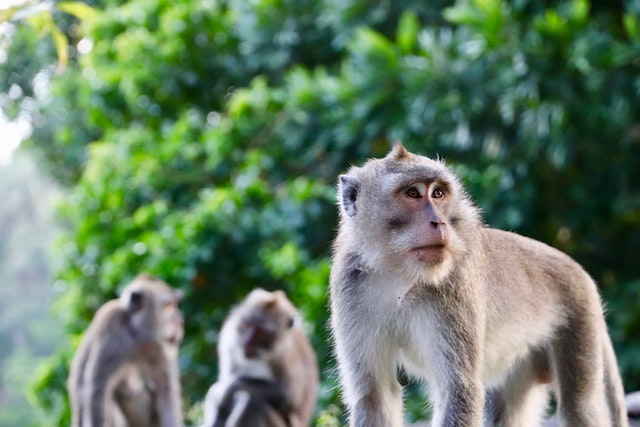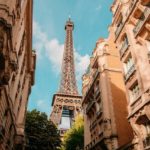The Truth about the Illegal Wildlife Trade

When you travel, you will always find some kind of animal attraction to partake in. Every traveler wants to see the native wildlife and interact with them, but you have to ask yourself, “Where did these animals come from and how are they treated?”
More times than not, the answer is going to be grim. The illegal wildlife trade is huge, and every day hoards of animals are being confiscated while in transit to their new location.
Every traveler wants to see the native wildlife and interact with them, but you have to ask yourself, “Where did these animals come from and how are they treated?”
I recently volunteered at the Tasikoki Wildlife Rescue Center in North Sulawesi and learned all about the animal trade and the dark secrets behind animal attractions. Tasikoki has many different animals that have been rescued. Some are being rehabilitated for future release and others, sadly, are ineligible to be placed back in the wild due to many different factors.
Macaques
Tasikoki has almost 100 macaques at the center. These little monkeys are being poached out of the wild in high numbers and are one of the most endangered species in Southeast Asia.
Have you come across a man walking around with a monkey offering to take photos of you and his pet for a small fee? Well, that monkey most likely was a macaque. Poachers will take the babies from their mothers and train them to be used as attractions. Not only are the babies taken from their families at a very young age, but a lot of the time, the older macaques will be killed in the process while trying to protect their young.
Macaques are also sold for their meat. Locals have eaten macaque meat for hundreds of years, and you can still find stalls at local markets selling the meat even though it is illegal.
Thankfully Tasikoki has been trying to get an okay from the Indonesian government to release their macaques back into the wild far away from humans.
Sun Bears
Tasikoki also has three sun bears that call the center home. Two of them were confiscated from a boat that was in transit with dozens of other animals. Their final destination was not known, but I can assure you it wasn’t going to be good for any of them.
The other bear was taken from a couple of men that were using him as a tourist attraction. He was found living in a cage not even big enough for him to stand up, and unlike the other two bears, he is very aggressive towards humans. Who could blame him? I wouldn’t like humans either had I been treated the same way.
Sun bears are used as performing animals in tourist attractions. They are only about 1/3 of the size of their black bear cousins, so they are much more manageable.
The bears are also taken from the wild and sold to testing facilities near the southern Chinese border. Their bile is extracted and used to test different medicines.
The three bears at Tasikoki will never be placed back into the wild. None of them have the skills to survive, but the main reason they will not be released is because there is nowhere left to release them.
When Tasikoki starts the process of reintroducing animals into the wild, they have to find out exactly where the animals came from. Just because the animals live in the jungle doesn’t mean they can be placed in any jungle. They have to go back to the very jungle they came from, and the place these bears used to call home does not exist anymore due to deforestation.
Orangutans
The two most popular animals at Tasikoki are the resident orangutans, Is and Bento. Is was confiscated from the boat that was found transporting the two sun bears, and Bento was found with an Indonesian family who kept him as a pet.
Like the macaques, orangutans are poached from the wild at a young age and their mothers are often killed in the process. The babies are then sold into the trade.
They might be used in attractions like orangutan boxing or performance animals. They might become a family pet, or (this is the worst one) they might be sold into the sex trade. Yes that’s right….the sex trade. I’m not going to go into gory details but look it up and have a box of tissues next to you because you will need them after hearing some of the stories.
They might become a family pet, or (this is the worst one) they might be sold into the sex trade.
Is and Bento are also not eligible for release into the wild. Their homes are gone and the few orangutan sanctuaries that exist are at capacity. They have a good life at Tasikoki, so they are not high on the list for relocation.
These are only a few of the animals that reside at Tasikoki Wildlife Rescue Center. You will find various birds, gibbons, turtles, snakes, and crocodiles that have also been rescued from the illegal wildlife trade.
If you are traveling and you see an animal being exploited or a person selling animal parts or meat, you can contact local authorities and make a report. You can also spread awareness by contacting Right Tourism and by telling your friends and fellow travelers about the issue.
We can make a difference and help stop the illegal animal trade by informing ourselves and our peers about the problem. I have volunteered with many people who have dedicated their lives to fight the trade, and they have inspired me to fight with them. I hope I can inspire you to do the same.
Photo credit: Unsplash.








